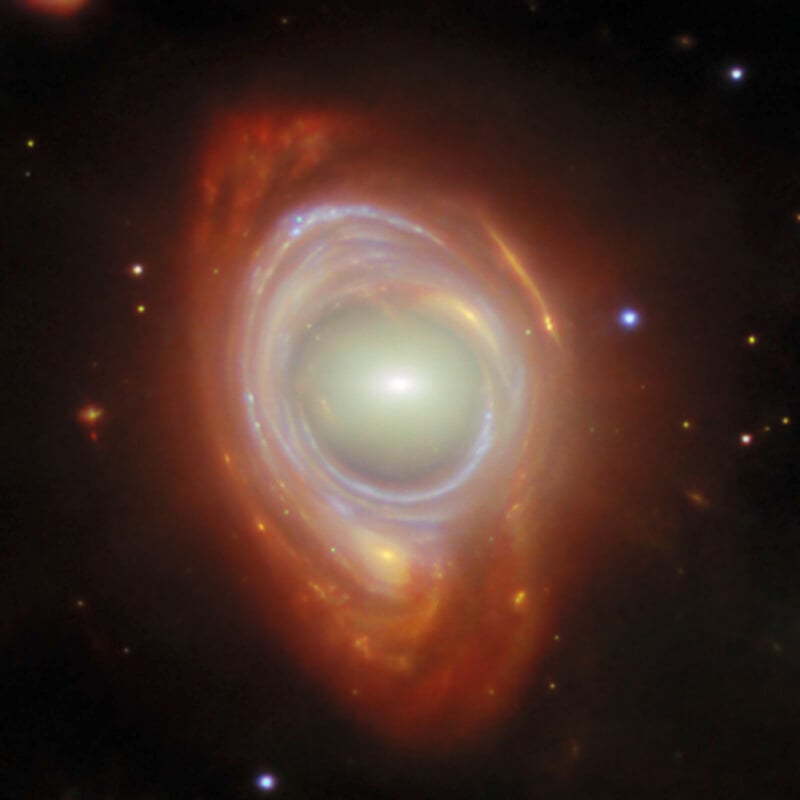Webb Captures Gorgeous Photo of ‘Einstein Ring’
![]()
Alongside capturing auroras on Neptune for the first time , the James Webb Space Telescope (JWST) also broke novel “ground” recently for its spectacular new image of an Einstein ring.
An Einstein ring is a rare cosmic phenomenon that is as eye-catching as it is mind-bending. What looks like a single, very unusual galaxy is actually two galaxies that are separated by a massive distance.
As the European Space Agency (ESA), which operates Webb alongside NASA and the Canadian Space Agency (CSA), describes, “The closer foreground galaxy sits at the center of the image, while the more distant background galaxy appears to be wrapped around the closer galaxy, forming a ring.”

Webb’s dazzling new image shows the immense power of gravitational forces in the Universe. Einstein rings like this occur when light from a very distant object, in this case, a very distant background galaxy, is warped by an extremely massive foreground object, a much closer galaxy. Spacetime, the very fabric of the Universe itself, is warped by mass, and light can be bent as it travels through space and time as well.
While the effect of gravity on light is not observable in the local galaxy, it is routinely seen when peering into the deep expanse of space. Scientists using telescopes like Webb regularly rely upon gravitational lensing to see extremely distant objects, effectively looking billions of years into the past.
The “lensing galaxy” is the elliptical galaxy cluster SMACSJ0028.2-7537. The more distant galaxy emitting the light being warped is a spiral galaxy, although ESA does not specify which one.
Although the James Webb Space Telescope was instrumental in collecting data used for this new image as part of the Strong Lensing and Cluster Evolution (SLICE) survey program, the image above also incorporates data from a pair of Hubble Space Telescope instruments, the Wide Field Camera 3 and the Advanced Camera for Surveys.
SLICE is led by Guillaume Mahler at the University of Liège in Belgium. Mahler heads a team of international astronomers working to trace eight billion years of galaxy cluster evolution by analyzing 182 galaxy clusters using Webb’s Near-Infrared Camera (NIRCam).

Webb is not the only space telescope to capture a brilliant Einstein ring in 2025. The 600-megapixel Euclid space telescope also documented one nearly two months ago. While Euclid’s image is much different from Webb’s new one, it is no less incredible.
Image credits: ESA/Webb, NASA & CSA, G. Mahler. Acknowledgment: M. A. McDonald.